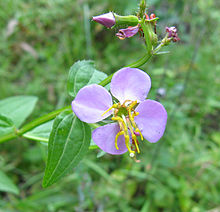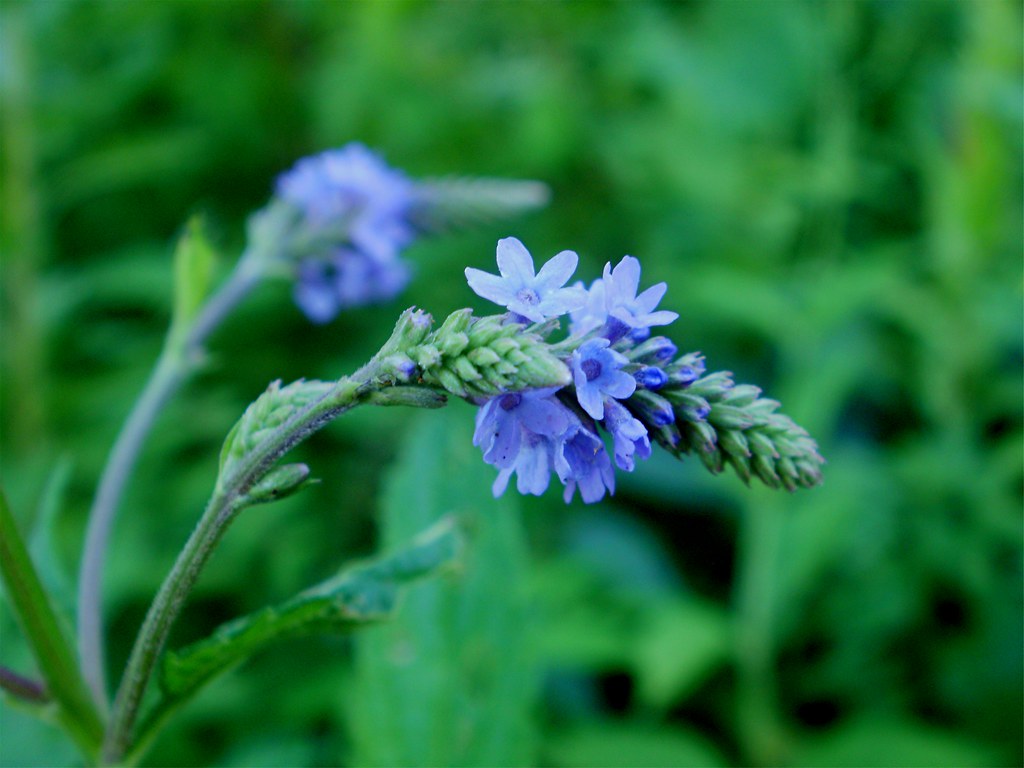July 23.
P. M. – To P. Hutchinson's.
I cannot find a single crotalaria pod there this year.
Stone-crop is abundant and has now for some time been out at R. Brown's watering-place; also the water plantain, which is abundant there.
About the water further north the elodea is very common, and there, too, the rhexia is seen afar on the islets, — its brilliant red like a rose. It is fitly called meadow-beauty. Is it not the handsomest and most striking and brilliant flower since roses and lilies began?
 |
| rhexia virginica |
Blue vervain out some days.
 |
| blue vervain |
Bathing yesterday in the Assabet, I saw that many breams, apparently an old one with her young of various sizes, followed my steps and found their food in the water which I had muddied. The old one pulled lustily at a Potamogeton hybridus, drawing it off one side horizontally with her mouth full, and then swallowed what she tore off.
The young pouts were two and a half inches long in Flint's Pond the 17th.
H. D. Thoreau, Journal, July 23, 1853
Water plantain, abundant. See July 19, 1853 ("The alisma will open to-morrow or next day")
The rhexia is seen afar on the islets. See July 18, 1852 ("The petals of the rhexia have a beautiful clear purple with a violet tinge."); August 1, 1856 (" They make a splendid show, these brilliant rose-colored patches . . Yet few ever see them in this perfection, unless the haymaker who levels them, or the birds that fly over the meadow. Far in the broad wet meadows, on the hummocks and ridges, these bright beds of rhexia turn their faces to the heavens, seen only by the bitterns and other meadow birds that fly over. We, dwelling and walking on the dry upland, do not suspect their existence..") See also A Book of the Seasons, by Henry Thoreau, Rhexia Virginica (meadow-beauty)
Blue vervain. See August 6, 1852 ("Blue vervain is now very attractive to me, and then there is that interesting progressive history in its rising ring of blossoms. It has a story.")
The young pouts were two and a half inches long. See July 15, 1856 ("wading into the shallow entrance of the meadow, I saw a school of a thousand little pouts about three quarters of an inch long")
A Book of the Seasons, by Henry Thoreau
"A book, each page written in its own season,
out-of-doors, in its own locality.”
~edited, assembled and rewritten by zphx © 2009-2021


No comments:
Post a Comment